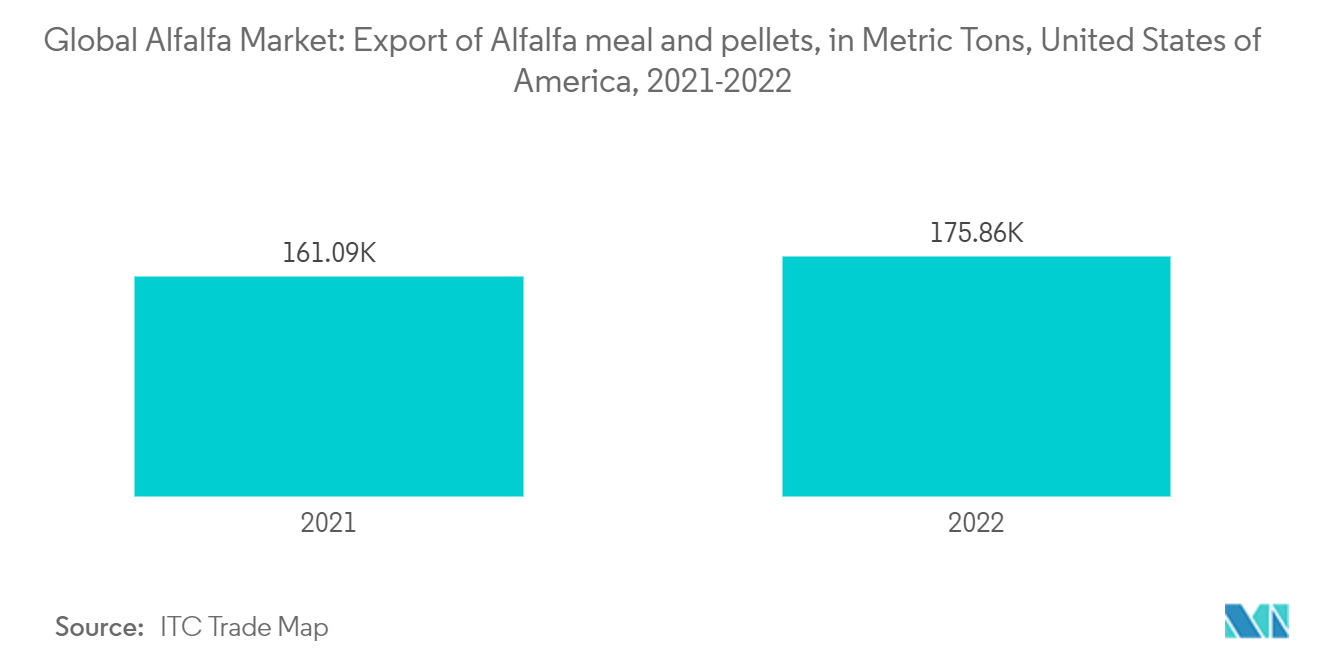Market Trends of Alfalfa Industry
Increasing Demand from the Dairy and Meat Sector
- Livestock significantly fuels the expansion of the global alfalfa market. The Food and Agriculture Organization reports that approximately 150 million households globally engage in milk production. In 2022, the world produced a staggering 930 million metric tons of milk. India is the top producer, accounting for 22% of the global output, trailed by the United States, Pakistan, China, and Brazil. As demand for premium animal protein surges, the livestock sector grapples with mounting pressures to keep pace.
- Alfalfa hay enhances the growth and development of animals at a faster rate and improves milk productivity. For instance, according to USDA ARS, the early lactation cows produced more milk for the maceration of alfalfa in comparison to other feeds. In addition, meat production increased from 334.28 million metric tons in 2020 to 355.46 million metric tons in 2022, reflecting a growth of 6.3%, as reported by the FAO. This increased global demand for alfalfa hay, especially for feeding cattle and horses.
- In Middle Eastern countries like the UAE and Saudi Arabia, the demand for alfalfa is surging. This uptick is largely due to government-imposed restrictions on hay production aimed at water conservation. Consequently, these nations are turning to the United States for their alfalfa hay needs. According to the ITC Tarde Map, in 2022, Saudi Arabia and UAE imported 273,751 metric tons and 748,809 metric tons, respectively. This demand is primarily fueled by a rising number of cows, with modern dairy farmers favoring imported hay and commercial feeds. As a result, the dairy sector is significantly driving the demand for alfalfa hay in these Middle Eastern countries.

Asia-Pacific is Expected to Dominate the Market
- As the dairy and meat sectors expand swiftly, countries in the Asia-Pacific, including India, China, Vietnam, Japan, and Indonesia, are witnessing a surge in alfalfa demand. For instance, Food and Agriculture Organization of the United Nations (2023) data from Our World in Data highlighted that in 2022, Asia-Pacific led global meat production, with 155.08 million metric tons, which accounted for 43.6% of the global total meat output. China is the major contributor to meat production in the region, with 92.95 million metric tons. This meat production is fueling the demand for alfalfa in the market. For instance, according to the ITC Trade Map, Asia-Pacific imported 65,417 metric tons in 2022, which was 10% more than in 2020.
- Government initiatives aimed at enhancing the alfalfa trade are driving the market's growth. For instance, according to the USDA FAS report, in 2021, the Ministry of Commerce and Industry, India, lifted the heat treatment requirement for US-origin alfalfa hay. They also acknowledged the United States's existing pest mitigation methods for this hay. Furthermore, the Indian government clarified that importing alfalfa hay for animal feed from the United States does not require a non-genetically modified certificate.


